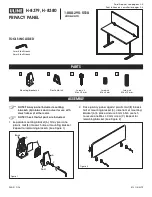
Energist UltraPlus VPL™ System
User Manual
SD1-43 Issue 3 (CCF 296)
51
It has also been hypothesised that light absorption by target cells also induces
cell membrane permeability resulting in a proton influx and dissipation of pH
gradients across the cell membrane. This effect, coupled with that of the
singlet oxygen species induced by PpIX provides a micro-environment
unsuitable for P. acnes.
7.4 Laser Techniques for Skin Rejuvenation
Up until recently, the ‘in vogue’ techniques for reducing or eliminating facial
rhytides or wrinkles included various topical agents such as glycolic acid,
retinoids, ascorbic acid, a variety of chemical peeling agents, dermabrasion,
and laser skin resurfacing. Of these techniques the most effective methods for
improving photo-damaged skin were invasive, which had major disadvantages
of requiring a significant recovery period following procedures such as laser
skin resurfacing. In addition, scarring has become more common place with
each of the invasive procedures including laser resurfacing.
Laser Resurfacing works on the principle of causing a controlled thermal burn,
which results in the removal (or ablation) of the upper layers of skin. The
associated thermal damage increases the rate at which new collagen is
produced and thus improving the appearance of wrinkles. The process is not
about resurfacing the skin with new tissue, but rather is about allowing a
controlled scar to evolve that shrinks over time, a process called contracture.
This controlled contracture is what gives the appearance of reduced wrinkling
of the skin. Laser Resurfacing involves the use of general (or sometimes
local) anaesthesia, 2-3 days stay in a hospital and constant bandage changes
for 3-4 weeks post-procedure. Research has shown that 80% of potential
patients withdraw due to the high risk of side effects.
The thermal effects on tissue are both time and temperature dependent, as
shown below:
•
From 42 to 45 deg.C: reversible protein and membrane changes occur
•
From 50 to 85 deg.C: denaturing the structure of cellular proteins
•
From 75 to 80 deg.C: irreversible collagen coagulation takes place
•
Above 100 deg.C: vaporization of tissue water occurs resulting in
ablation and carbonization.
Whilst good results can be obtained, these are often tempered by the
presence of a number of complications. As the skin has been damaged, its
natural barrier protection to infection is significantly reduced, so great care
must be taken until the area has healed completely. Postoperative
hyperpigmentation occurs after almost any cutaneous laser procedure,
regardless of type. It is particularly common in patients with darker skin and
whilst in the majority of cases it will only last for three or four months, it can be
permanent. Postoperative hypopigmentation is also possible, particularly after
multiple treatments and is again common in darker skin types. Delayed
permanent hypopigmentation is a well recognised complication particularly to
CO
2
laser skin resurfacing as is persistent Erythema.
















































